Findings from a Community-Based Research Project Led by Women Living with HIV
 Thanks to medical advances, people with HIV are living longer, healthier lives than ever before. Yet women with HIV face multiple barriers to staying engaged in care.
Thanks to medical advances, people with HIV are living longer, healthier lives than ever before. Yet women with HIV face multiple barriers to staying engaged in care.
For the past 26 years, the Ryan White Program has served as a critical gap-filler, helping to deliver medical care and supportive services. A crucial source of essential health coverage for people living with HIV, Ryan White is likely to undergo reauthorization within the next several years. In addition, implementation of the Affordable Care Act has changed the landscape of health care available to low-income people with chronic conditions.
To inform the future of medical care and service delivery for women with HIV, Positive Women’s Network – USA (PWN-USA) facilitated a community-based participatory research project led by women living with HIV.
180 women living with HIV in 7 geographic regions were surveyed to find out what was working, what wasn’t, and which services would help women stay in care.
Download the full report here.
Download a short version of the key findings here.
Significant numbers of the women surveyed:
- were low-income (89.7% below 138% of the Federal Poverty Level [FPL])
- were unstably housed and/or reliant on subsidized housing
- had family responsibilities (regardless of reproductive age)
- relied on subsidized health care for primary medical coverage
Despite facing barriers to care, participants were deeply committed to their own health and their families’ wellbeing.
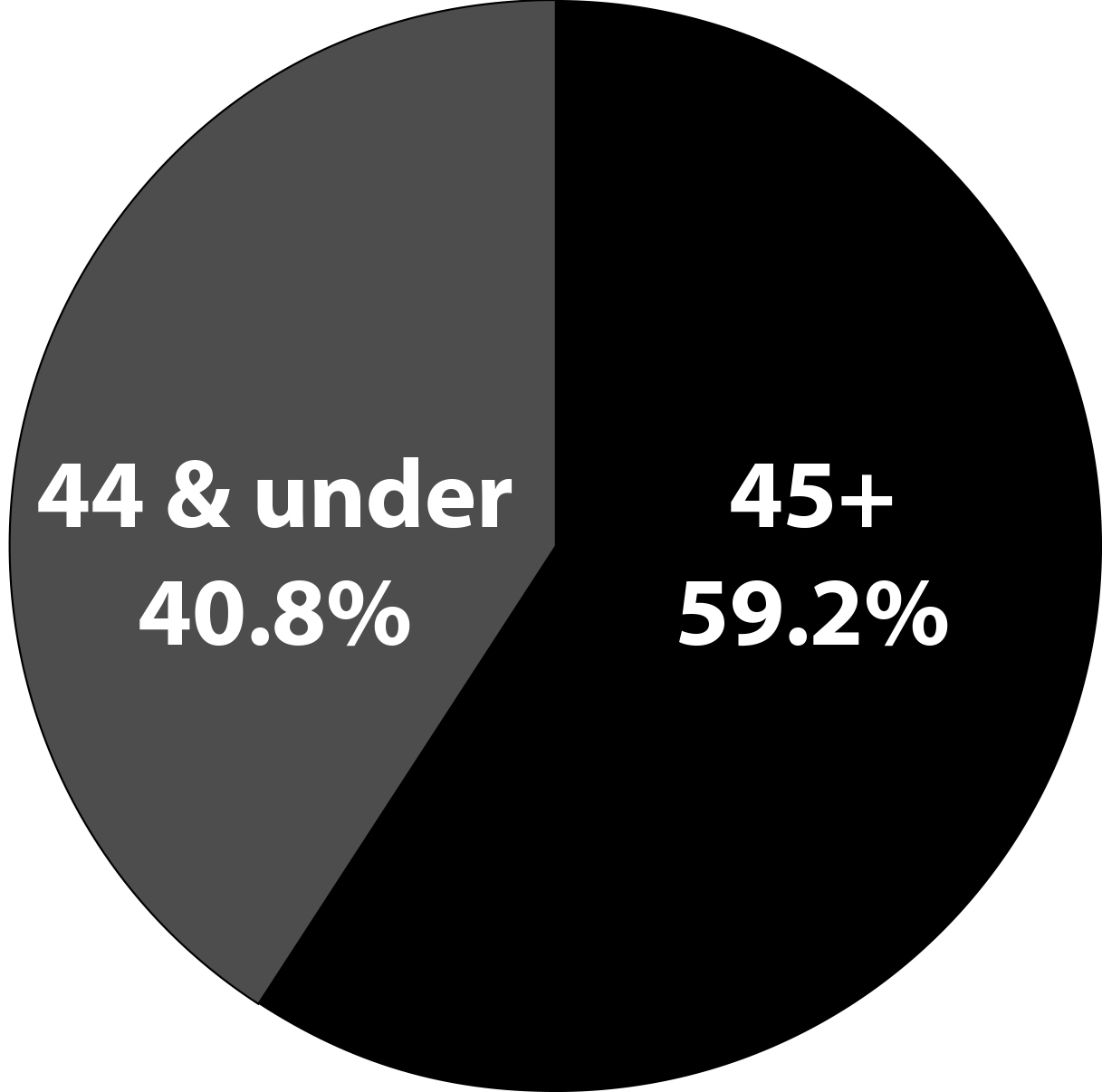
Race
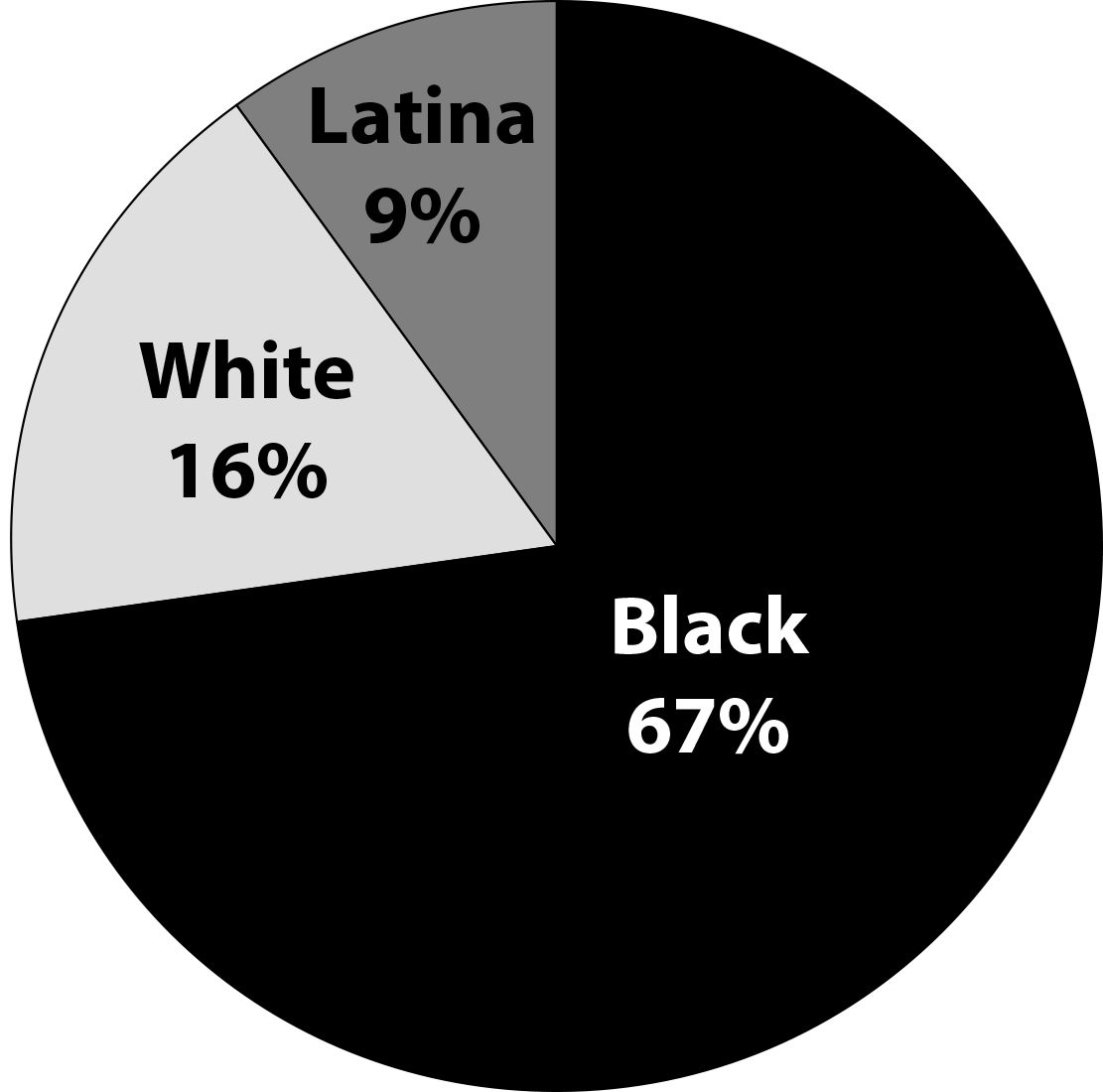
Age
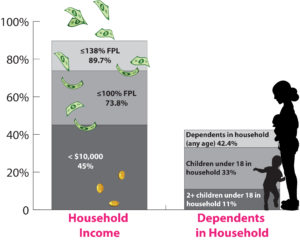
Household Income and Number of Dependents in Household
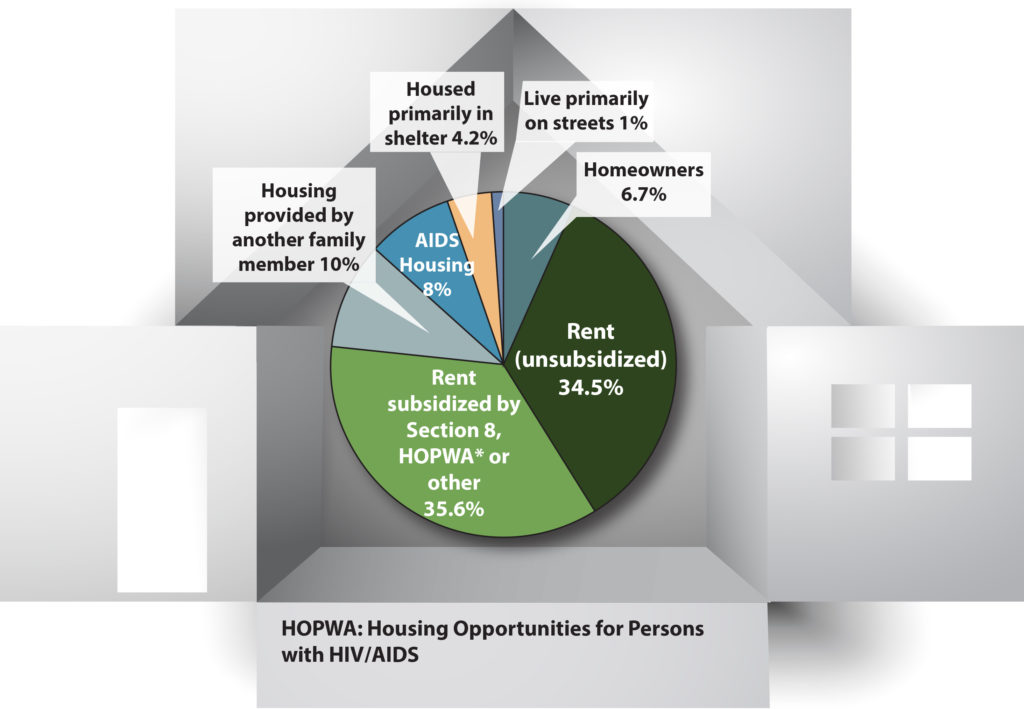
Housing Status
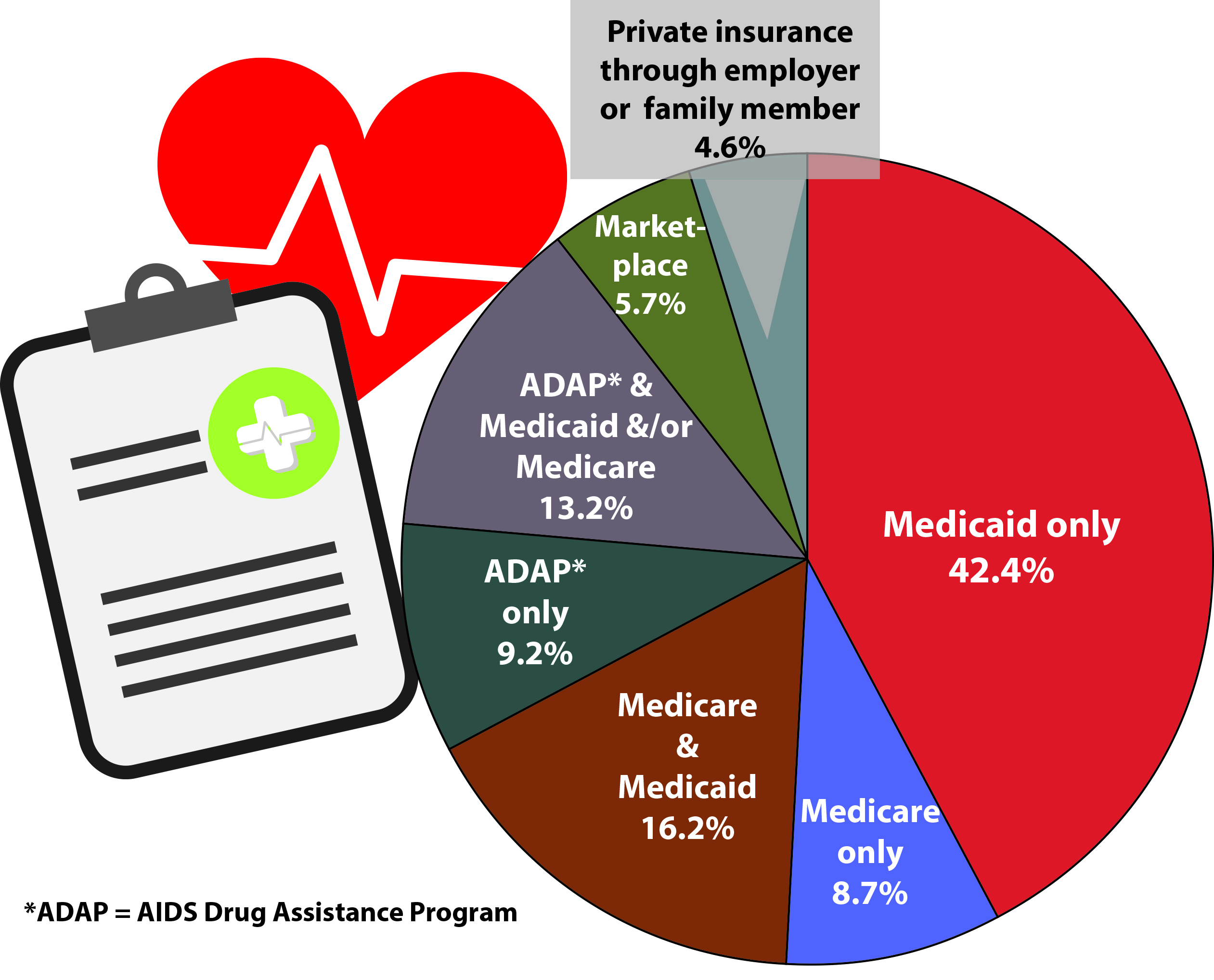
Healthcare Coverage
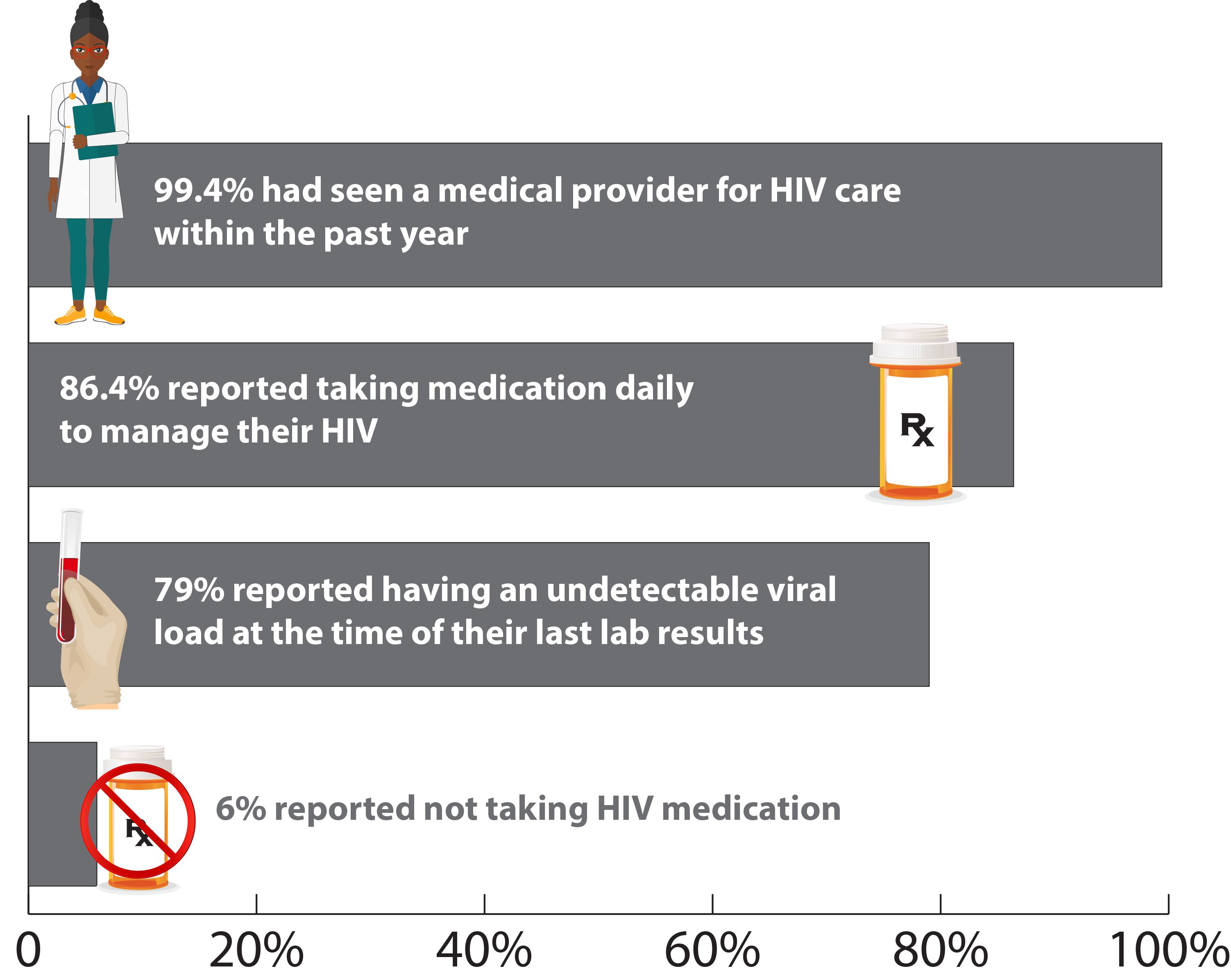
Engagement in Care
What do women with HIV need to stay in care?
While most participants were consistently in care, many faced significant barriers.
50% of respondents who had missed a medical appointment in the past year cited transportation as the reason.
32% of respondents had missed filling a prescription for HIV medications in the past year. Primary reasons were: lack of transportation (24%), copay cost (15%), and pharmacy hours (11%).
50% of participants who reported needing child care services on site at their medical provider did not receive those services.
Financial and structural barriers were interrelated. All respondents who reported they had missed filling a prescription due to copay cost in the past year also reported that they had missed a medical appointment due to lack of transportation.
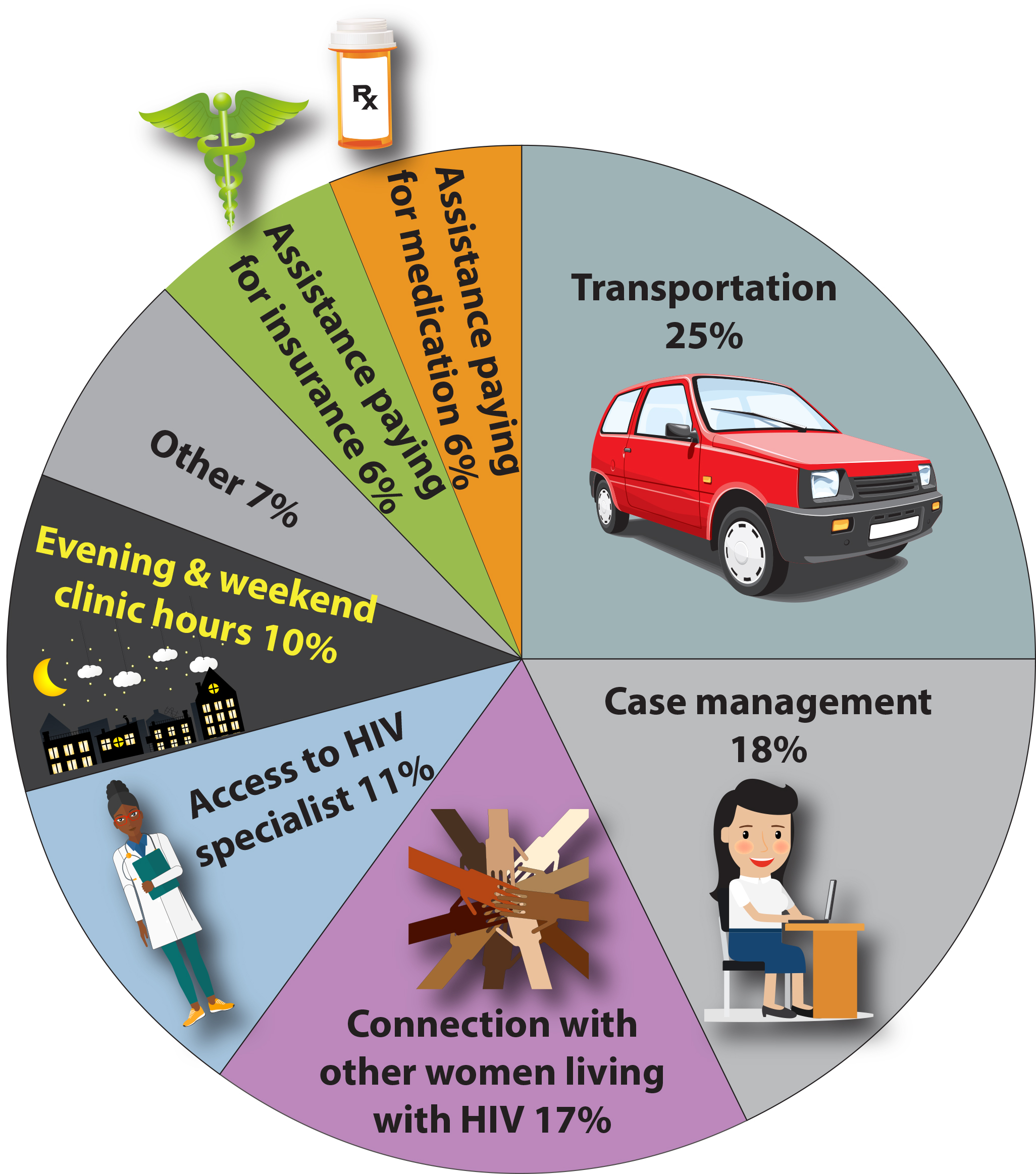
Q: What one thing would help you stay in care?
Sexual and Reproductive Healthcare
While providers appeared to be doing a fairly good job at screening for cervical cancer (for which women with HIV are at high risk), lack of attentiveness to sexual and reproductive needs and desires may be related to stigmatizing attitudes toward sexuality of women living with HIV.
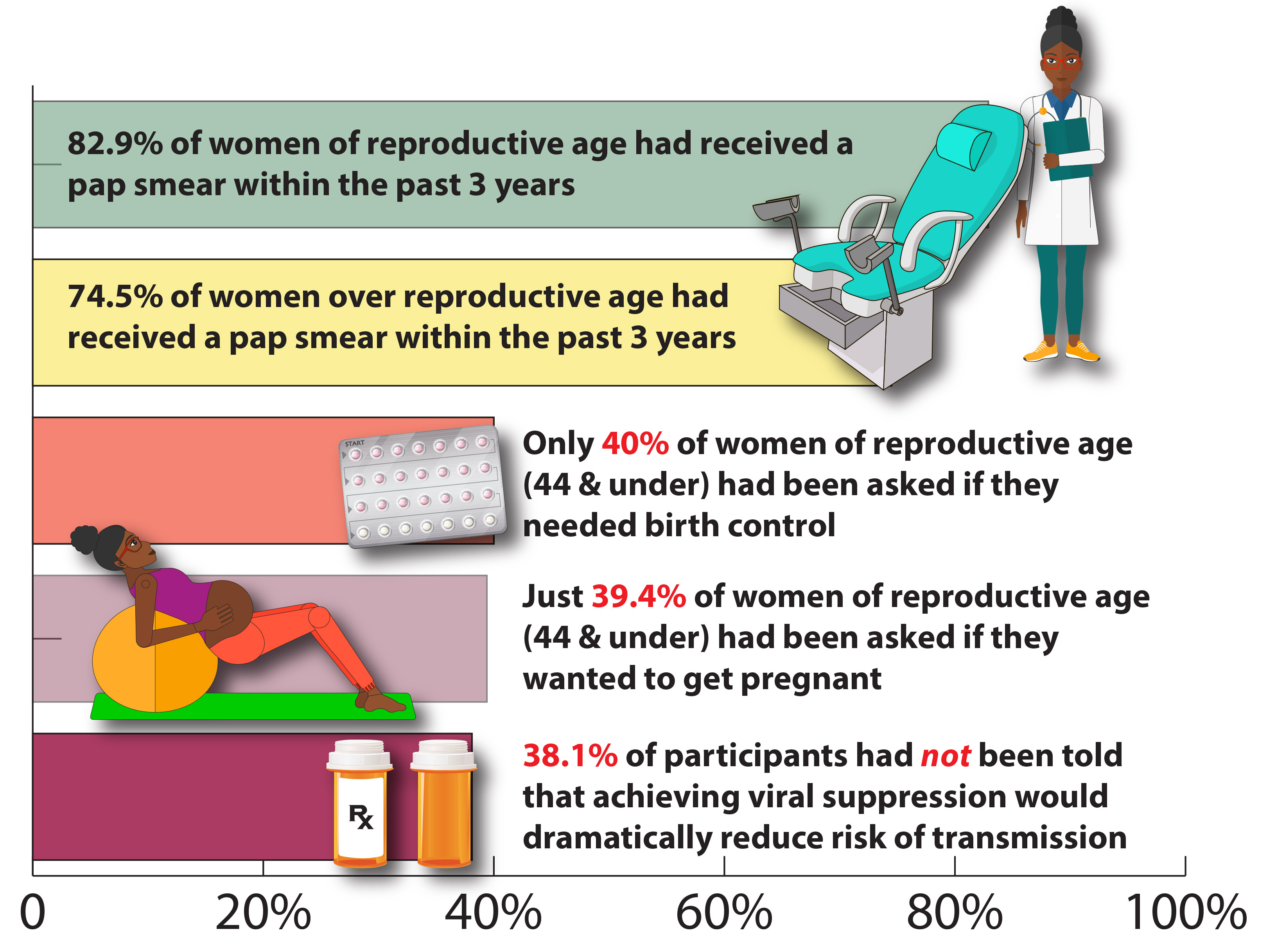
Gaps in Mental Health Services
17% of respondents had been diagnosed with post-traumatic stress disorder (PTSD). An alarming 64.9% had been diagnosed with depression.
Nearly two-thirds (64.6%) of respondents reported that they would like to see someone for counseling or therapy. Of those, 59% were able to access therapy as needed. Others reported that cost, lack of coverage, lack of available services or waitlists for services presented a barrier.
87% of Project participants reported interest in attending an HIV support group, yet of those, nearly 20% were unable to access one.
Recommendations
Care for women with HIV in the Ryan White system is generally working, when they are able to access it. However, as women live longer with HIV and increasingly contend with extreme poverty, co-occurring conditions, and the effects of lifetime trauma, focused support is needed to secure engagement in care and address quality of life concerns. Our recommendations:
1. Improve the quality of care provided by:
a. expanding the availability of high-quality sexual and reproductive health care (SRH) services through all parts of the Ryan White Program; and
b. instituting trauma-informed practices and enhancing the availability of mental health services for people living with HIV.
2. Implement interventions that improve the fundamental economic conditions of women’s lives.
3. Institutionalize mechanisms to strengthen navigation between HIV care and other systems.
4. Invest in services that support access to care, with an emphasis on addressing transportation, copayments, child care for adults of all ages with dependents, and other structural and cost-related barriers.
5. Address stigma by expanding availability of peer support, psychosocial support, and stigma reduction interventions and ending HIV-related criminalization.
Ryan White will continue to be urgently needed to fill gaps in other health care systems and through other payer sources. Services currently provided through Ryan White Part D funding remain necessary, including peer support, childcare, medical transportation that includes transportation for minors, and high-quality SRH. In particular, culturally relevant and non-stigmatizing SRH services should become a standard of care for all women with HIV, including women of trans experience, independent of clinic type or payer source.


